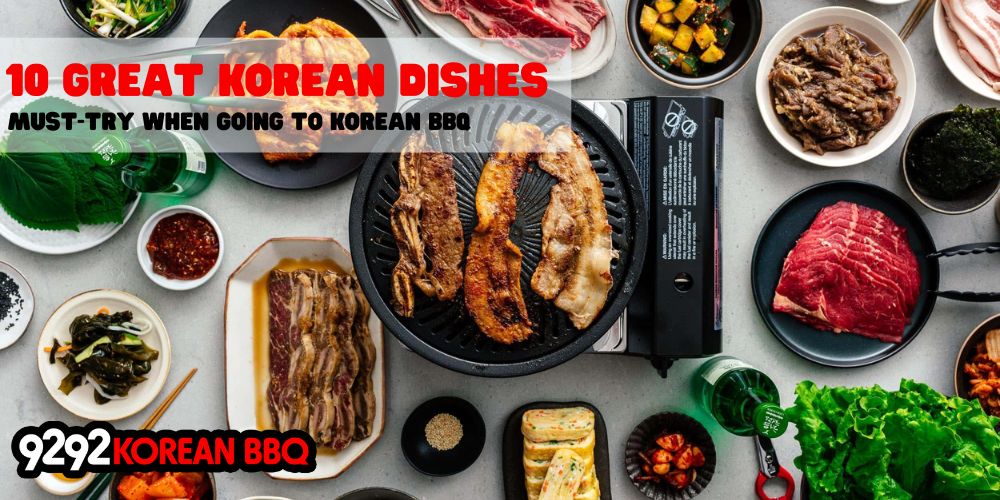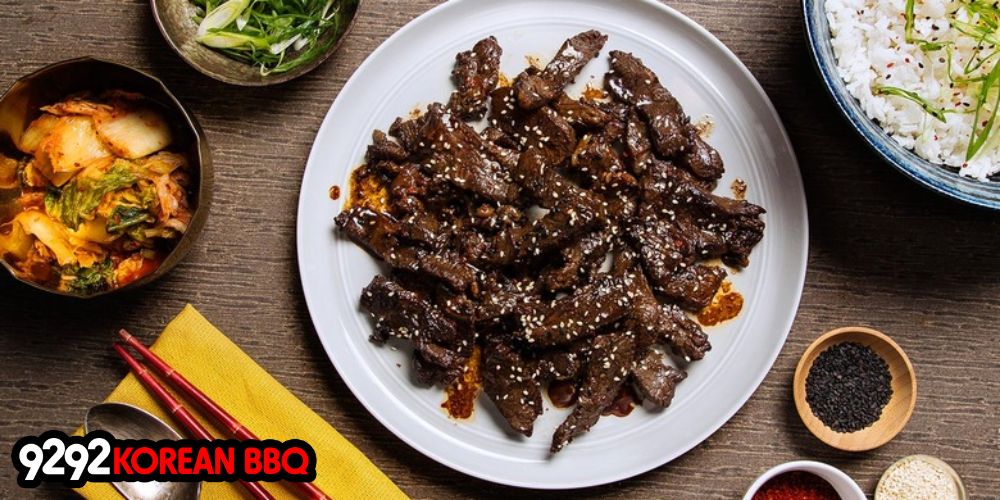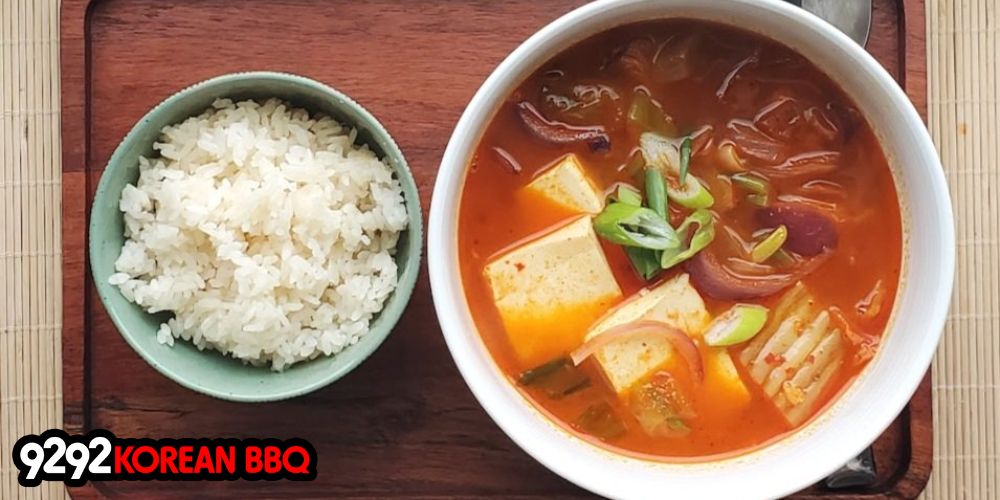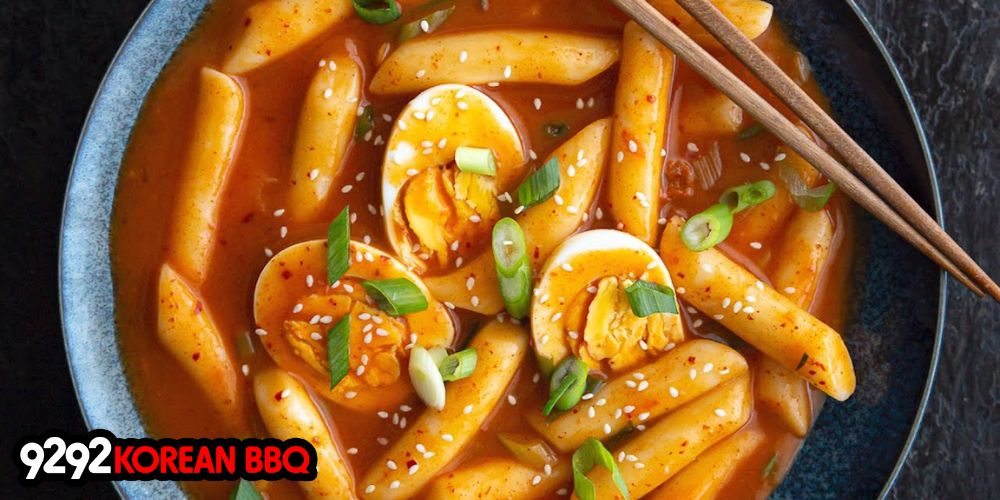
10 Great Korean Dishes Must-Try When Going to Korean BBQ
Korean BBQ has gained immense popularity worldwide, offering an array of flavors that cater to various palates. Whether you're a first-timer or a Korean BBQ aficionado, this guide will walk you through 10 must-try dishes that embody the essence of Korean culinary tradition. These selections are not only delicious but also provide insight into Korea's rich culture and cuisine.
1. Bulgogi
Bulgogi, often highlighted as one of the Top 10 must-try dishes at a Korean BBQ, is a quintessential example of Korean culinary artistry. This dish features thinly sliced beef, typically sirloin or rib eye, marinated in a sweet and savory sauce made from soy sauce, sugar, sesame oil, garlic, and often a touch of pear or apple for added sweetness. The meat is then grilled to perfection, often at the tableside, resulting in tender, flavorful pieces that are slightly caramelized on the outside. Bulgogi's appeal lies in its balance of flavors - the marinade infuses the beef with a delectable mix of sweet, savory, and slightly smoky notes. Served with a side of steamed rice and various banchan (Korean side dishes), Bulgogi provides a delightful dining experience, showcasing the harmonious flavors and grilling techniques central to Korean cuisine.

2. Galbi - Succulent Short Ribs
Galbi, a renowned Korean dish, features succulent short ribs that are both tender and rich in flavor. These ribs are traditionally marinated in a mixture of soy sauce, garlic, sugar, and Asian pear, which tenderizes the meat and infuses it with a sweet and savory depth. The ribs are then grilled, often over an open flame, which caramelizes the marinade and creates a slightly smoky, charred exterior. This grilling process highlights the natural flavors of the beef and the complexity of the marinade. Galbi is usually served with a side of steamed rice and various Korean side dishes, known as banchan, making it a fulfilling and well-rounded meal. The Irresistible Appeal of Korean BBQ - The dish's combination of the tender, flavorful meat with the sweet and savory marinade exemplifies the rich culinary heritage of Korea and is a favorite at Korean BBQs and family gatherings.
3. Samgyupsal - Juicy Pork Belly
Samgyupsal, a popular Korean dish, features thick, juicy slices of pork belly grilled to perfection. This unseasoned meat, known for its rich flavor and tender texture, is cooked at the table on a grill, allowing it to develop a crispy exterior while remaining succulent inside. Typically enjoyed with sides like fresh lettuce, garlic, kimchi, and a spicy bean paste sauce (ssamjang), diners wrap the meat in lettuce leaves, creating a delightful blend of flavors and textures. What is Unique About Korean BBQ? Samgyupsal is not just a meal but a social dining experience, often accompanied by soju, making it a favorite in Korean BBQ culture.
4. Dak Galbi - Spicy Stir-Fried Chicken
Dak Galbi is a vibrant and flavorful Korean dish, consisting of chicken marinated in a spicy gochujang-based sauce. This marinated chicken is stir-fried with an array of vegetables like cabbage, sweet potatoes, and onions, often with the addition of tteok (rice cakes) for added texture. The combination of the spicy, slightly sweet sauce and the succulence of the chicken creates a harmonious blend of flavors. Cooked in a large pan at the table, Dak Galbi offers a communal dining experience, allowing diners to enjoy the dish hot and fresh. This dish is not just a feast for the palate but also a lively and interactive culinary experience, showcasing the bold and spicy flavors that are characteristic of Korean cuisine.
5. Kimchi Jjigae - Rich Fermented Cabbage Stew
Kimchi Jjigae is a quintessential Korean stew, renowned for its rich and tangy flavors, primarily derived from fermented kimchi. This hearty dish typically includes ingredients like onions, garlic, and pork or tofu, adding depth and protein to the stew. The base is often an anchovy or meat-based stock, seasoned with Korean chili flakes (gochugaru) and chili paste (gochujang), creating a spicy and umami-rich broth. Served boiling hot, often in a stone pot, Kimchi Jjigae is a staple in Korean cuisine, particularly cherished during the colder months. It's a perfect representation of how simple ingredients can be transformed into a complex and satisfying meal, embodying the essence of Korean culinary traditions.

6. Japchae - Stir-Fried Glass Noodles
Japchae, a classic Korean dish, is celebrated for its delicate yet satisfying flavors and textures. It features stir-fried glass noodles made from sweet potato starch, giving them a unique, chewy texture. The noodles are mixed with an assortment of colorful vegetables like spinach, carrots, and onions, and often include thinly sliced meat, typically beef. Each ingredient is cooked separately and then combined, ensuring distinct flavors and textures. The dish is seasoned with soy sauce, sesame oil, and a hint of sugar, creating a harmonious balance of sweet and savory. Japchae is often garnished with sesame seeds and served as a side dish or a main meal, especially during festive occasions. Its combination of chewy noodles, crisp vegetables, and tender meat, all coated in a light, flavorful sauce, makes Japchae a beloved and visually appealing dish in Korean cuisine.
7. Haemul Pajeon - Seafood Pancake
Haemul Pajeon, a traditional Korean seafood pancake, is a delightful combination of fresh seafood and a savory, crispy batter. This dish typically features a variety of seafood such as shrimp, squid, and green onions, mixed into a light batter made from wheat and rice flour. The batter, studded with seafood and vegetables, is pan-fried to a golden-brown, yielding a pancake that's crispy on the outside and tender on the inside. Haemul Pajeon is often enjoyed with a dipping sauce made from soy sauce, vinegar, and a hint of chili, enhancing the flavors of the seafood. This dish is not just a popular appetizer or snack; it's a staple in Korean cuisine, especially appreciated for its crisp texture and the fresh, oceanic flavors of the seafood.
8. Bibimbap - Mixed Rice Bowl
Bibimbap is a quintessential Korean dish known for its vibrant colors and diverse flavors. It consists of a bowl of warm white rice topped with a variety of sautéed and seasoned vegetables, a raw or fried egg, and sliced meat, usually beef. The ingredients are neatly arranged on the rice, creating an eye-catching display. A dollop of gochujang (Korean chili paste) adds a spicy, savory kick to the dish. The magic of Bibimbap lies in its final step: before eating, all the ingredients are stirred together, blending the distinct flavors and textures into a harmonious and satisfying meal. Bibimbap is not only a delight to the taste buds but also offers a balanced and nutritious meal, showcasing the simplicity and elegance of Korean cuisine.
9. Tteokbokki - Spicy Rice Cakes
Tteokbokki, also known as spicy rice cakes, is a beloved street food in Korea, famed for its unique combination of flavors and textures. This dish is primarily made from "tteok" (rice cakes), which are cylindrical and chewy, offering a delightful texture contrast. These rice cakes are stir-fried in a gochujang-based sauce, which is a Korean red chili paste, giving the dish its signature spiciness.
The sauce often includes a blend of sweet and savory ingredients, like sugar, soy sauce, and sometimes a bit of garlic, creating a complex flavor profile that is both spicy and slightly sweet. Fish cakes, known as "eomuk" in Korean, are also a common ingredient in tteokbokki, adding a soft, spongy texture and a mild, savory flavor that complements the rice cakes.
Tteokbokki's combination of chewy rice cakes, flavorful sauce, and various mix-ins make it a satisfying, comforting dish, perfect for those looking to explore the rich and diverse flavors of Korean cuisine.
Read more: How to make Korean BBQ sauce at home

10. Bingsu - Shaved Ice Dessert
Bingsu, a popular Korean shaved ice dessert, is a delightful treat especially enjoyed during the warm summer months. It consists of finely shaved ice, which has a light and fluffy texture, almost like freshly fallen snow. This icy base is typically topped with a variety of sweet ingredients such as chopped fruit, red beans, sweetened condensed milk, and flavored syrups. Modern variations may include toppings like ice cream, cereal flakes, and even small pieces of cake. The key to a good Bingsu lies in the quality and fineness of the shaved ice, which should melt in your mouth instantly. This refreshing dessert is not just a way to beat the heat; it's a perfect blend of textures and flavors, making Bingsu a beloved and indulgent treat in Korean cuisine.
Conclusion
Korean BBQ is more than just a meal; it's an experience that brings people together. These 10 dishes offer a glimpse into the rich and diverse world of Korean cuisine. Each dish not only satisfies the palate but also tells a story about Korea's culinary history and cultural traditions. When visiting a Korean BBQ restaurant, trying these dishes will undoubtedly enhance your dining experience.


